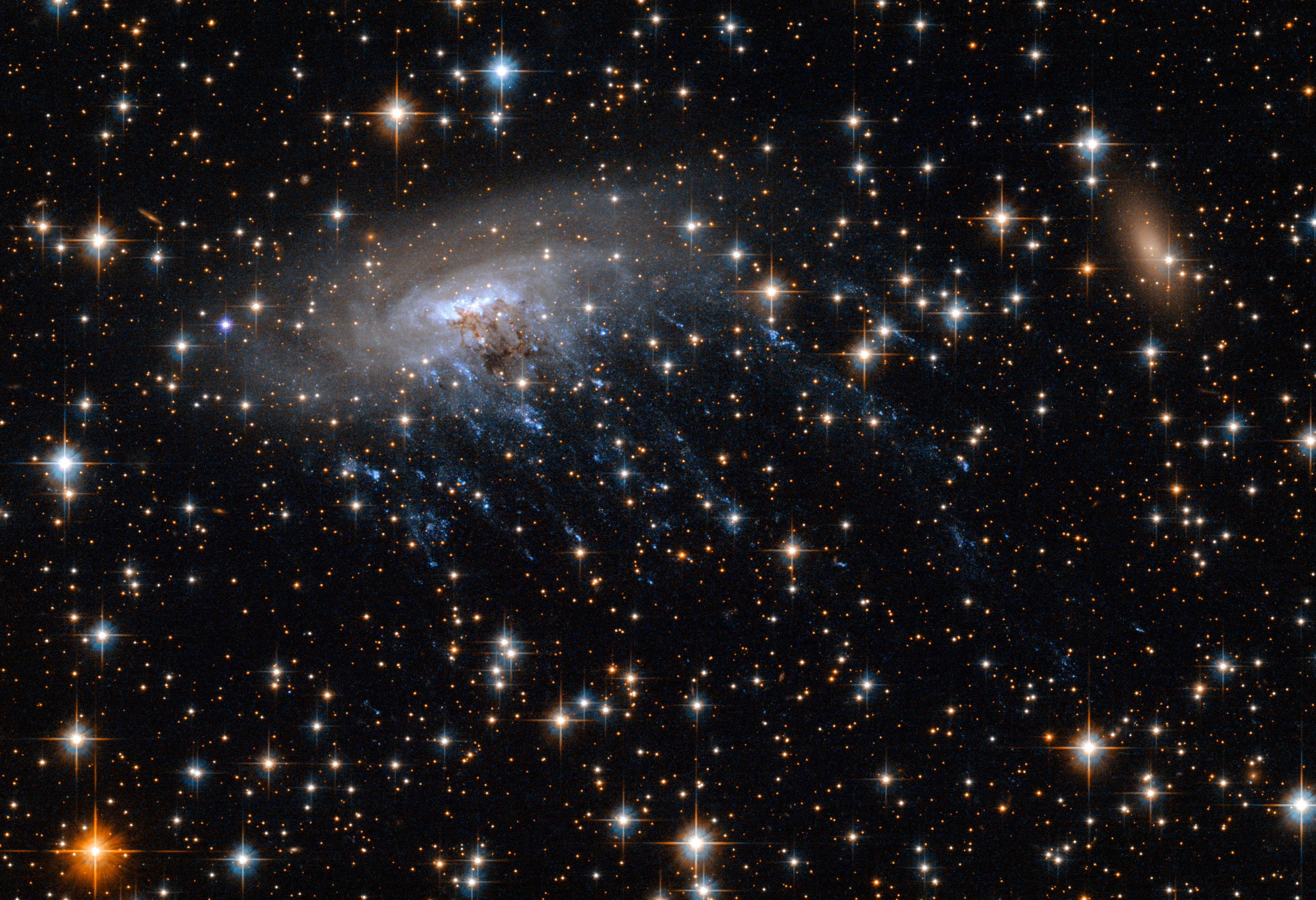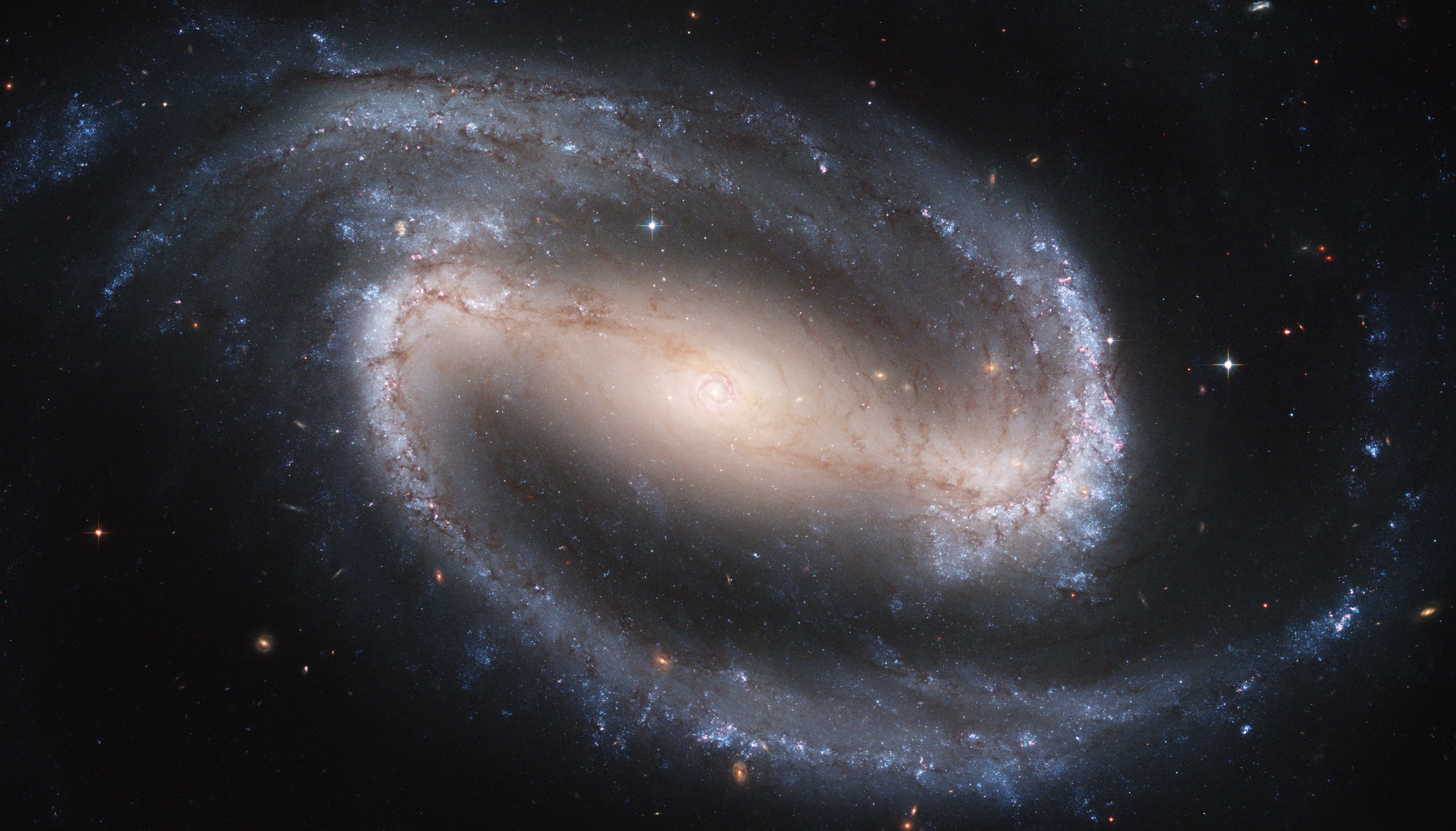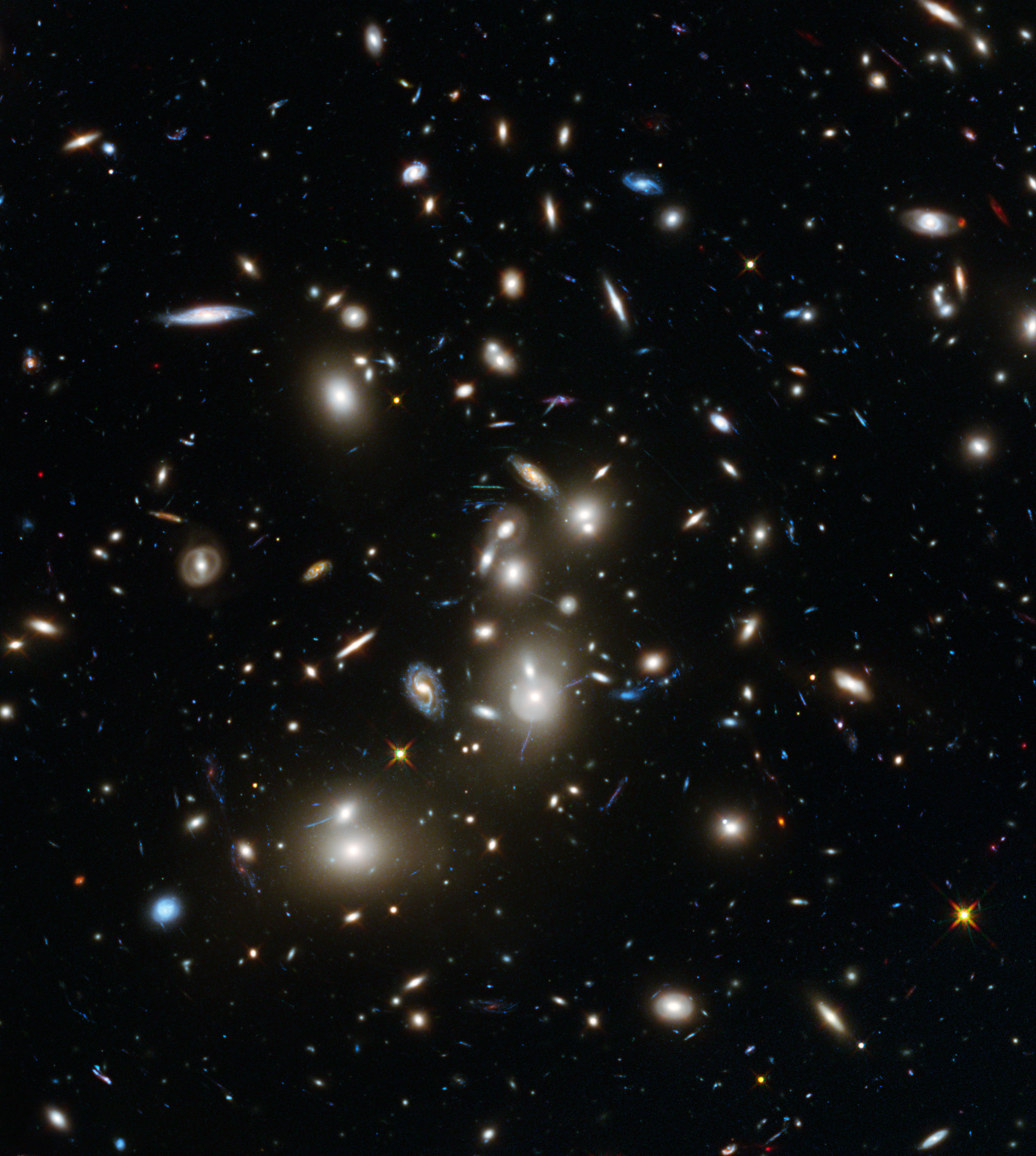|
Norma Cluster
The Norma Cluster (ACO 3627 or Abell 3627) is a rich cluster of galaxies located near the center of the Great Attractor; it is about distant. Although it is both nearby and bright, it is difficult to observe because it is located in the Zone of Avoidance, a region near the plane of the Milky Way. Consequently, the cluster is severely obscured by interstellar dust at optical wavelengths. Its mass is estimated to be on the order of 1015 solar masses. ESO 137-001, an example of a jellyfish galaxy, is located in Abell 3627. See also * List of galaxy groups and clusters * Coma Cluster * Eridanus Cluster * Fornax Cluster * Virgo Cluster * X-ray astronomy References External links ESO Press Photos 46a-j/99* NASA The National Aeronautics and Space Administration (NASA ) is an independent agency of the US federal government responsible for the civil space program, aeronautics research, and space research. NASA was established in 1958, succeeding t ... Image of the Day, ... [...More Info...] [...Related Items...] OR: [Wikipedia] [Google] [Baidu] |
Epoch (astronomy)
In astronomy, an epoch or reference epoch is a moment in time used as a reference point for some time-varying astronomical quantity. It is useful for the celestial coordinates or orbital elements of a celestial body, as they are subject to perturbations and vary with time. These time-varying astronomical quantities might include, for example, the mean longitude or mean anomaly of a body, the node of its orbit relative to a reference plane, the direction of the apogee or aphelion of its orbit, or the size of the major axis of its orbit. The main use of astronomical quantities specified in this way is to calculate other relevant parameters of motion, in order to predict future positions and velocities. The applied tools of the disciplines of celestial mechanics or its subfield orbital mechanics (for predicting orbital paths and positions for bodies in motion under the gravitational effects of other bodies) can be used to generate an ephemeris, a table of values giving the posit ... [...More Info...] [...Related Items...] OR: [Wikipedia] [Google] [Baidu] |
ESO 137-001
ESO 137-001 is a barred spiral galaxy located in the constellation Triangulum Australe and in the cluster Abell 3627. As the galaxy moves to the center of the cluster at 1900 km/s, it is stripped by hot gas, thus creating a 260,000 light-year long tail. This is called ram pressure stripping. The intergalactic gas in Abell 3627 is at 100 million Kelvin, which causes star formation in the tails. History The galaxy was discovered by Ming Sun in 2005. Galaxy's fate The stripping of gas is thought to have a significant effect on the galaxy's development, removing cold gas from the galaxy, shutting down the formation of new stars in the galaxy, and changing the appearance of inner spiral arms and bulges because of the effects of star formation. Gallery ALMA explores a Cosmic Jellyfish.tif, ALMA explores a Cosmic Jellyfish. NASA's Hubble Finds Life is Too Fast, Too Furious for This Runaway Galaxy (12952512944).jpg, Runaway Galaxy (12952512944) See also * Abell 3627 * List ... [...More Info...] [...Related Items...] OR: [Wikipedia] [Google] [Baidu] |
Norma Cluster
The Norma Cluster (ACO 3627 or Abell 3627) is a rich cluster of galaxies located near the center of the Great Attractor; it is about distant. Although it is both nearby and bright, it is difficult to observe because it is located in the Zone of Avoidance, a region near the plane of the Milky Way. Consequently, the cluster is severely obscured by interstellar dust at optical wavelengths. Its mass is estimated to be on the order of 1015 solar masses. ESO 137-001, an example of a jellyfish galaxy, is located in Abell 3627. See also * List of galaxy groups and clusters * Coma Cluster * Eridanus Cluster * Fornax Cluster * Virgo Cluster * X-ray astronomy References External links ESO Press Photos 46a-j/99* NASA The National Aeronautics and Space Administration (NASA ) is an independent agency of the US federal government responsible for the civil space program, aeronautics research, and space research. NASA was established in 1958, succeeding t ... Image of the Day, ... [...More Info...] [...Related Items...] OR: [Wikipedia] [Google] [Baidu] |
NASA
The National Aeronautics and Space Administration (NASA ) is an independent agency of the US federal government responsible for the civil space program, aeronautics research, and space research. NASA was established in 1958, succeeding the National Advisory Committee for Aeronautics (NACA), to give the U.S. space development effort a distinctly civilian orientation, emphasizing peaceful applications in space science. NASA has since led most American space exploration, including Project Mercury, Project Gemini, the 1968-1972 Apollo Moon landing missions, the Skylab space station, and the Space Shuttle. NASA supports the International Space Station and oversees the development of the Orion spacecraft and the Space Launch System for the crewed lunar Artemis program, Commercial Crew spacecraft, and the planned Lunar Gateway space station. The agency is also responsible for the Launch Services Program, which provides oversight of launch operations and countdown management f ... [...More Info...] [...Related Items...] OR: [Wikipedia] [Google] [Baidu] |
Virgo Cluster
The Virgo Cluster is a large cluster of galaxies whose center is 53.8 ± 0.3 Mly (16.5 ± 0.1 Mpc) away in the constellation Virgo. Comprising approximately 1,300 (and possibly up to 2,000) member galaxies, the cluster forms the heart of the larger Virgo Supercluster, of which the Local Group (containing our Milky Way galaxy) is a member. The Local Group actually experiences the mass of the Virgo Supercluster as the Virgocentric flow. It is estimated that the Virgo Cluster's mass is 1.2 out to 8 degrees of the cluster's center or a radius of about 2.2 Mpc. Many of the brighter galaxies in this cluster, including the giant elliptical galaxy Messier 87, were discovered in the late 1770s and early 1780s and subsequently included in Charles Messier's catalogue of non-cometary fuzzy objects. Described by Messier as nebulae without stars, their true nature was not recognized until the 1920s. The cluster subtends a maximum arc of approximately 8 degrees centered in the constellation ... [...More Info...] [...Related Items...] OR: [Wikipedia] [Google] [Baidu] |
Fornax Cluster
The Fornax Cluster is a cluster of galaxies lying at a distance of 19 megaparsecs (62 million light-years). It has an estimated mass of solar masses, making it the second richest galaxy cluster within 100 million light-years, after the considerably larger Virgo Cluster. It may be associated with the nearby Eridanus Group. It lies primarily in the constellation Fornax, with its southern boundaries partially crossing into the constellation of Eridanus, and covers an area of sky about 6° across or about 28 sq degrees. The Fornax Cluster is a particularly valuable source of information about the evolution of such clusters due to its relatively close proximity to the Sun. It also shows the gravitational effects of a merger of a galaxy subgroup with the main galaxy group, which in turn lends clues about the associated galactic superstructure. At the centre of the cluster lies NGC 1399. Other cluster members include NGC 1316 (the group's brightest galaxy), NGC 1365, NGC 1427A, N ... [...More Info...] [...Related Items...] OR: [Wikipedia] [Google] [Baidu] |
Eridanus Cluster
The Eridanus Cluster is a galaxy cluster roughly from Earth, containing about 73 main Galaxy, galaxies and about 200 total galaxies. About 30% have Hubble sequence, Hubble classifications of elliptical or S0 and the remaining 70% are spiral or irregular. These galaxies reside in smaller groups which are all loosely gravitationally bound to each other, suggesting that the system is still condensing from the Hubble flow and may eventually form a cluster of about 1014 . A low velocity dispersion compared to that of, for example, the Coma cluster, supports this hypothesis. The Eridanus Cluster is located in the constellation Eridanus (constellation), Eridanus near the Fornax Cluster, and is sometimes called the "Fornax II Cluster". Table of galaxies See also *List of galaxy clusters *Coma Cluster *Fornax Cluster *Norma Cluster *Virgo Cluster References {{DEFAULTSORT:Eridanus Cluster Eridanus (constellation) Galaxy clusters Southern Supercluster ... [...More Info...] [...Related Items...] OR: [Wikipedia] [Google] [Baidu] |
Coma Cluster
The Coma Cluster (Abell 1656) is a large galaxy cluster, cluster of galaxies that contains over 1,000 identified galaxies. Along with the Leo Cluster (Abell 1367), it is one of the two major clusters comprising the Coma Supercluster. It is located in and takes its name from the constellation Coma Berenices. The cluster's mean distance from Earth is 99 Parsec, Mpc (321 million light years). Its ten brightest spiral galaxies have apparent magnitudes of 12–14 that are observable with amateur telescopes larger than 20 cm. The central region is dominated by two supergiant elliptical galaxy, elliptical galaxies: NGC 4874 and NGC 4889. The cluster is within a few degrees of the north galactic pole on the sky. Most of the galaxies that inhabit the central portion of the Coma Cluster are ellipticals. Both dwarf and giant ellipticals are found in abundance in the Coma Cluster. Cluster members As is usual for clusters of this richness, the galaxies are overwhelmingly ellipt ... [...More Info...] [...Related Items...] OR: [Wikipedia] [Google] [Baidu] |
List Of Galaxy Groups And Clusters
This article lists some galaxy groups and galaxy clusters. Defining the limits of galaxy clusters is imprecise as many clusters are still forming. In particular, clusters close to the Milky Way tend to be classified as galaxy clusters even when they are much smaller than more distant clusters. Clusters exhibiting strong evidence of dark matter Some clusters exhibiting strong evidence of dark matter. Named groups and clusters This is a list of galaxy groups and clusters that are well known by something other than an entry in a catalog or list, or a set of coordinates, or a systematic designation. Clusters Groups The major nearby groups and clusters are generally named after the constellation they lie in. Many groups are named after the leading galaxy in the group. This represents an ad hoc systematic naming system. Groups and clusters visible to the unaided eye The Local Group contains the largest number of visible galaxies with the naked eye. However, it ... [...More Info...] [...Related Items...] OR: [Wikipedia] [Google] [Baidu] |
Jellyfish Galaxy
A jellyfish galaxy is a type of galaxy found in galaxy clusters. They are characterised by ram pressure stripping of gas from the affected galaxy by the intracluster medium, triggering starbursts along a tail of gas. Jellyfish galaxies have been seen in a number of galaxy clusters including Abell 2125 (redshift z=0.20; ACO 2125 C153); Abell 2667 (z=0.23; G234144−260358); Abell 2744 (z=0.31; ACO 2744 Central Jellyfish; HLS001427–30234/ACO 2744 F0083; GLX001426–30241 / ACO 2744 F0237 / ACO 2733 CN104; MIP001417–302303 / ACO 2744 F1228; HLS001428–302334; GLX001354–302212 ). Gallery Example of a jellyfish galaxy JO204.jpg, Jellyfish galaxy JO204 taken by ESO The European Organisation for Astronomical Research in the Southern Hemisphere, commonly referred to as the European Southern Observatory (ESO), is an intergovernmental research organisation made up of 16 member states for ground-based ast ...'s MUSE instrument. Of bent time and jellyfish SDSS J1110+645 ... [...More Info...] [...Related Items...] OR: [Wikipedia] [Google] [Baidu] |




